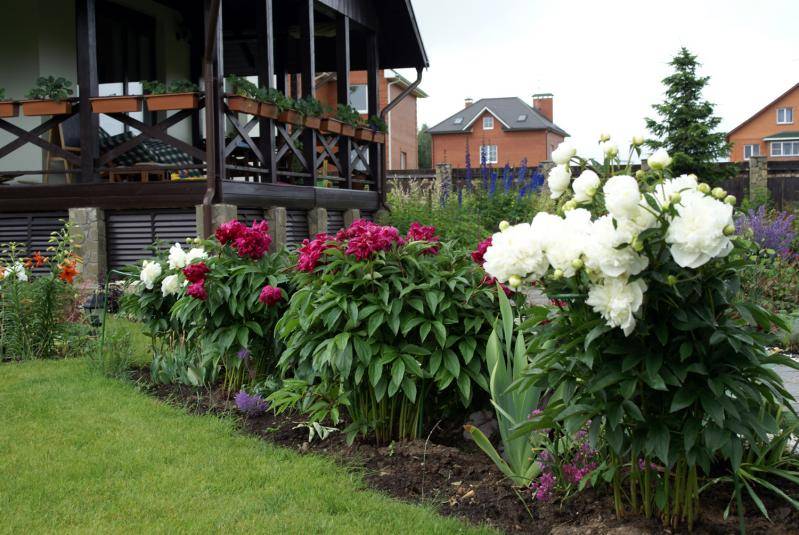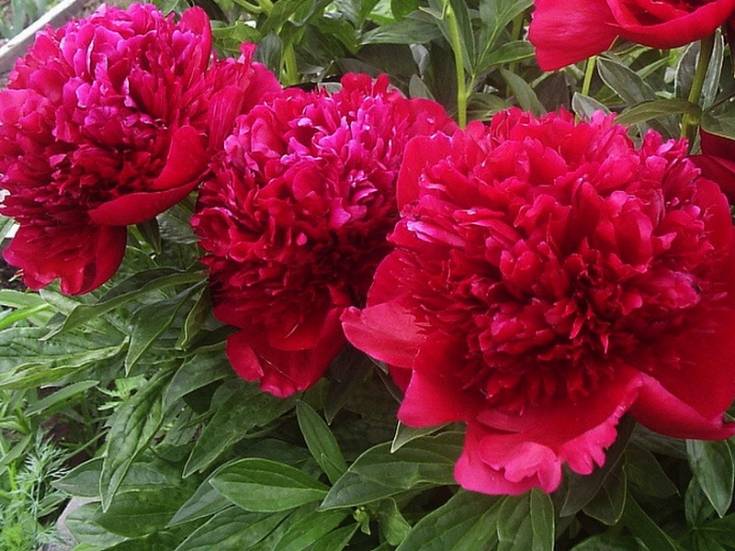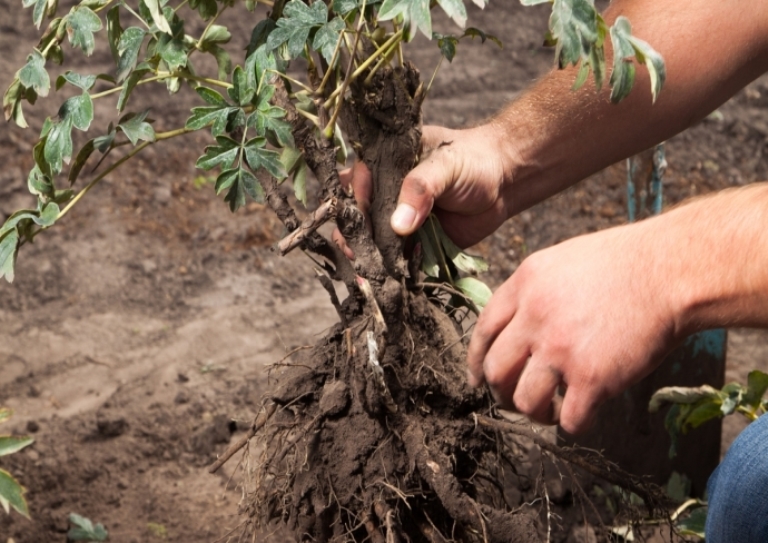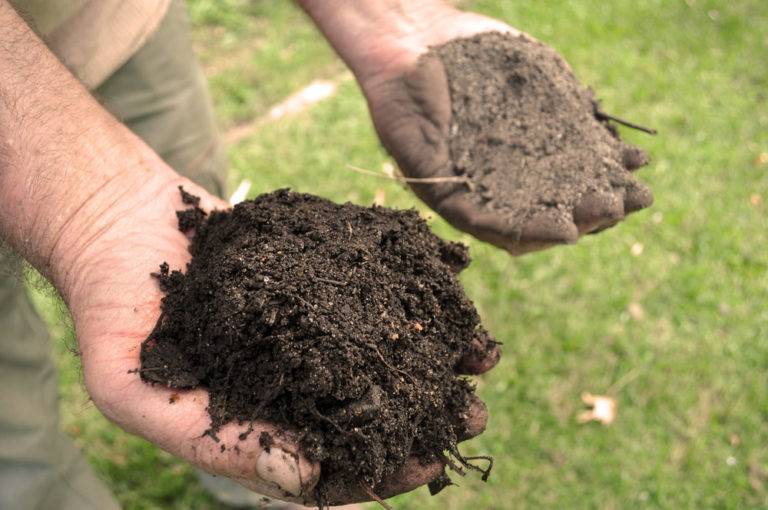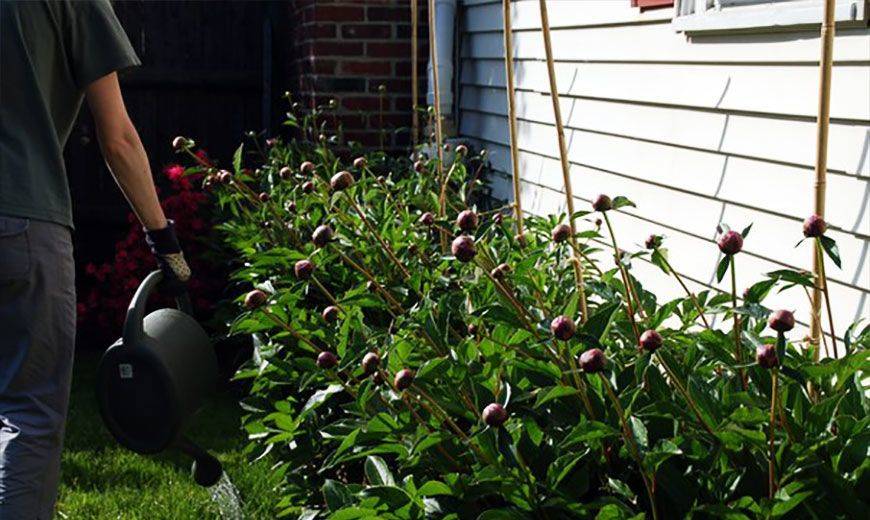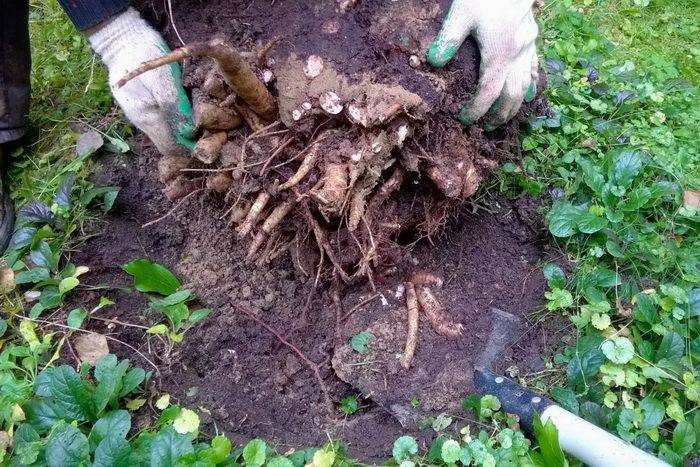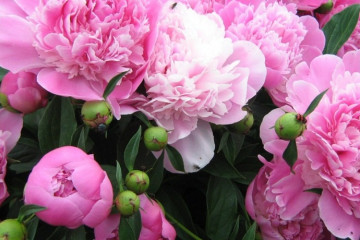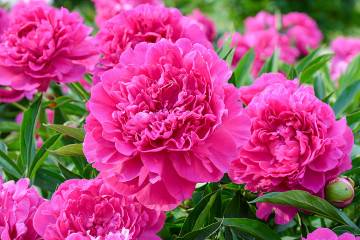Why peonies do not bloom, buds do not develop and how to deal with it
Content:
A flower bed of lushly blooming peonies will not leave anyone indifferent - it is a truly breathtaking sight. Admiration is caused not only by the luxurious large balls-buds, but also by the bush itself, abundantly covered with dark green foliage.
General information about how the peony develops and blooms
Peonies in the garden are not uncommon. In part, its popularity is also due to the fact that this flower is unpretentious, and perfectly tolerates the collisions of the Russian climate. And if the peonies have stopped blooming, then the reason for this must be a really serious problem.
Peony is a long-lived plant. His stay in the garden can easily exceed ten years. Usually, the first flowers appear already in the second year after planting the plot in the ground. By the way, in addition to reproduction by plots, there are several not the easiest ways to get high-quality planting material:
- cuttings;
- pruning;
- reproduction by layering;
- reproduction by seeds.
If the reproduction of the peony was carried out in these ways, then the first flowers should be expected no earlier than in 3-5 years.
Depending on the variety, the first buds appear on the bush in mid-May. Later varieties begin to bloom in early or mid June. On average, the duration of flowering of one bush is about 20 days, after which the seed boll begins to ripen.
Common Landing Mistakes Leading to Poor Development: How to Fix
High-quality planting material and its correct placement on the territory of the garden are a guarantee that a year later the flower will present those around it with fragrant buds. Why should you carefully consider the choice of planting material and how to plant it correctly in order to further enjoy the look and scent of flowers?
Poor planting material
In most cases, the peony gets into the garden from the shelves of flower shops or agricultural firms. In order for the seedling to be guaranteed to take root, you should carefully examine it when buying. The flower section can be either with an open root system or closed. If planting material with an open rhizome is selected, then its weight, the general condition of the root system, the type and number of buds should be assessed.
A stunted root with 1-2 buds is most likely doomed to death, since it will not be able to receive nutrients from the soil in the required amount. A root that is too large is also not the best option for planting. In this case, the development of new young roots will be difficult, which, in turn, will affect the survival rate of the plant and the number of buds in the future.
The optimal division of the peony should look like this:
- have 3-4 roots of multidirectional growth with a thickness of at least 2 cm and a length of about 20 cm;
- have 4-5 healthy kidneys.
Wrong location selected
Why does the peony not grow, even though the highest quality planting material was chosen? One of the reasons may be the wrong landing site.
Peony is a light-loving plant, but at the same time it does not tolerate drafts and cold winds.Therefore, you should choose a location in which the peony would receive a sufficient amount of sunlight. The site should be protected on the leeward side by a fence or hedgerow of shrub with a small root system.
Incorrect fit
Planting errors can also affect the growth and flowering of the peony. First of all, it is about the correct deepening of the cut into the soil. Some novice gardeners, knowing that the peony has an impressive root system, make a large deep hole for planting.
Indeed, the hole should be large, but not deep. It is better to further expand it so that the roots of the plant develop not in depth, but in breadth. So the flower will receive the necessary amount of nutrients and it will be easier to care for it. Ideally, the rhizome of the flower should be deepened into the soil at least 5 cm.
Poor soil composition
The composition of the soil plays an important role in the existence of a peony. If the soil is rich in nutrients, has a neutral or slightly acidic pH, then the plant will feel comfortable.
If the soil has a high content of peat in the composition, then the plant will hurt and stop growing. In this case, you will have to forget about colors altogether. To remedy the situation, you need to add ash, fine river sand and organic matter in the form of manure or humus to the soil.
Transplants
Peony is one of those flowers that does not tolerate frequent transplants extremely well. In case of a change of location, flowering can only be expected the next year, or even later. Therefore, it is recommended to carefully consider the habitat of the plant so as not to abuse this procedure, which injures the root system of the flower.
Care mistakes and how to fix them
Very often the answer to the question why peonies do not bloom lies in a gross violation of the rules for caring for this spectacular plant. In order not to lose this imperial garden decoration, mistakes must be corrected as soon as possible.
Bush flooding
Good soil drainage is one of the main conditions for proper plant development. It is simply necessary if the groundwater comes too close to the surface or the flower bed is located in a lowland where excess moisture accumulates.
Drainage, which will avoid rotting of the root system of the peony, is done as follows:
- a hole for planting a peony must be made 10-25 cm deeper;
- shards, coarse gravel, sea pebbles are laid on the bottom;
- a layer of sand is laid on the drainage layer.
Excess or lack of fertilizer in the soil
There is an opinion that peonies do not need fertilization. This is not true. Top dressing is required for this garden culture throughout the growing season, up to autumn. A lack of nutrients threatens flowers with poor bud formation, pale foliage and poor resistance to common garden infections.
In addition to organic fertilizers in the form of manure, peonies need nitrogen-containing supplements to stimulate the development of greenery, and potassium-phosphorus supplements to form buds. In addition, in early spring, it is necessary to feed the still dormant bushes with saltpeter.
Despite the fact that peonies respond perfectly to fertilizing with fertilizers, it is unacceptable to overfeed them. Often, it is the overabundance of nutrients in the soil that can be the reason why peonies do not grow in buds.
Pruning rules not followed
To stimulate the flowering of a peony, you should strictly follow the rules for seasonal pruning and cutting off faded buds.Some experts argue that rare flowers that appear within the next two years after planting should be pruned during the budding stage in order to simulate future development of the bush. However, you should still focus on the general condition of the flower.
If the peony bush is developing steadily well, then you can allow the peony to bloom the next year, promptly removing weak, unblown buds, as well as buds that have formed on the lateral shoots.
Seasonal pruning involves removing leaves and stems completely. Some gardeners are mistaken in intending to prune the plant immediately after flowering. The fact is that in this case, the buds will not be able to form properly, and most likely there will be no flowers next year.
Seasonal pruning of peonies is done when the last leaf has turned yellow and wilted. This usually happens in the fall. In addition, all undeveloped and small shoots are removed. It is not worth cutting off the stems at the root, you must definitely leave 15-20 cm of the height of the bush.
Launching the root system
What to do if peonies do not bloom and why, with seemingly perfect care, the plant refuses to give color? Maybe. the problem lies in the running of the root system. By neglect, we mean not only possible diseases that can affect the rhizome of a peony, but also excessive growth of the root.
In order to prevent pathological growth, the rhizome should be examined every few years for rotten, dead or overly large roots. Sick and dried roots must be removed, and the healthy part of the rhizome must be treated with fungicides. In case of overgrowth, the root should be divided into several plots, shortening the longest root rays.
External factors
External factors can have a significant impact on the ability of peony buds to open actively. Dry dry weather or, on the contrary, lack of sunny days can nullify all the efforts of the gardener. In this case, even a bud that has gained color may not bloom. However, you can try to minimize the impact of negative weather events.
In a drought, the peony bush requires additional measures to retain moisture in the soil. For this, mulching the root zone of the bush with sawdust, coniferous bark or reeds is perfect. In addition, mulching will help protect the plant from the dominance of weeds.
Rainy weather will favor the development of various types of rot. In this state, lush flowering is out of the question. If it is not possible to arrange a reliable shelter for peony flowers, then after waiting for a dry day, you should treat the root with an antifungal drug. However, care should be taken to ensure that the solution does not get on the buds, as their appearance may be affected. And then it will be very difficult to make the plant bloom.
Diseases and pests
Most often, peonies, including tree ones, become victims of fungal diseases, viral infections and rot. Among them:
- gray rot;
- powdery mildew;
- mosaic leaves;
- lemaunov's disease;
- brown rust.
Under such circumstances, there is no need to wait for a lush flowering. Standard broad-spectrum fungicides are used to combat most fungal diseases. When processing, you should act according to the instructions. Plant areas affected by fungi must be removed and disposed of without fail.
Insects can also cause peonies to not bloom. They are attracted by the sweet syrupy sap of the flower. Insects gnaw the leaves and petals of the buds, causing irreparable damage to the plant.Most often, such pests attack the bushes:
- aphid;
- ants;
- root knot nematode;
- bronze beetle;
- caterpillar of the hop fineworm;
- thrips.
Insecticides should be used to control insect pests. To achieve a stable result, you need to perform processing many times. Some gardeners resort to folk methods to combat garden infections and insects. However, practice shows that they are still ineffective.
Why didn't the peony bloom? As you can see, there can be plenty of reasons. Having understood the situation and correcting the mistakes of agricultural technology, you can ensure yourself the opportunity to admire this beautiful flower for many, many years.
